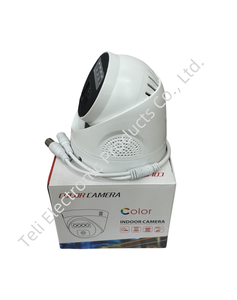Introduction to Security Monitoring Room
A security monitoring room serves as the nerve center for surveillance and security management, ensuring safety and peace of mind for businesses and individuals alike. This dedicated space is equipped with advanced technology that allows for the continuous observation and analysis of surveillance feeds. From corporate offices to retail environments, a well-designed security monitoring room plays a crucial role in preventing theft, ensuring employee safety, and addressing potential security threats in real time.
Types of Security Monitoring Rooms
Security monitoring rooms can be categorized based on the scale of operations and the technologies utilized. Understanding these types will help you select the most suitable room for your needs:
- Basic Security Monitoring Rooms: Generally equipped with standard cameras and local recording systems, suitable for small businesses.
- Advanced Security Operations Centers (SOCs): These facilities utilize real-time data analysis, allowing security personnel to react swiftly to incidents.
- Mobile Security Monitoring Rooms: Designed for temporary setups, these mobile units are equipped with portable surveillance equipment for events or emergencies.
- Integrated Command and Control Rooms: Combining both security monitoring and operational functions, these rooms are often found in large organizations for centralized decision-making.
Function, Feature, and Design of Security Monitoring Rooms
The primary function of a security monitoring room is to maintain vigilance over monitored locations. Key features and design aspects include:
- High-Definition Surveillance Cameras: Providing clear images and extensive coverage, allowing security personnel to detect incidents quickly.
- Ergonomic Workstations: Designed for comfort and efficiency, enabling operators to monitor multiple screens and respond effectively.
- Centralized Control Systems: Offering seamless integration of all security devices, facilitating easier management of alarms, cameras, and alerts.
- 24/7 Operation Capability: Ensuring constant monitoring, crucial for evaluating security situations at any hour.
- Data Storage Solutions: Utilizing cloud or local servers for reliable video storage, making it easy to retrieve footage when needed.
Applications of Security Monitoring Rooms
Security monitoring rooms find applications across various industries, demonstrating their value and necessity:
- Retail: Preventing shoplifting and vandalism, while ensuring customer and employee safety.
- Corporate Offices: Monitoring employee access, protecting sensitive information, and preventing unauthorized entry.
- Transportation Hubs: Overseeing airports and transit stations, ensuring passenger security and operational safety.
- Municipal Facilities: Managing public safety in parks, civic centers, and other community spaces.
- Educational Institutions: Safeguarding students and staff in schools, maintaining a secure learning environment.
Advantages of a Security Monitoring Room
The investment in a security monitoring room can significantly enhance an organization's safety measures. The advantages include:
- Enhanced Security: Increases the ability to deter crime and respond promptly to incidents, reducing the likelihood of loss.
- Improved Risk Management: Facilitates the identification and mitigation of potential risks before they escalate into serious incidents.
- Real-Time Alerts: Immediate notification systems that keep security teams informed and ready to act.
- Evidence Collection: Provides vital evidence during investigations, assisting law enforcement agencies when necessary.
- Operational Efficiency: Streamlines security processes, allowing for centralized control and better resource allocation.















































































































































































































